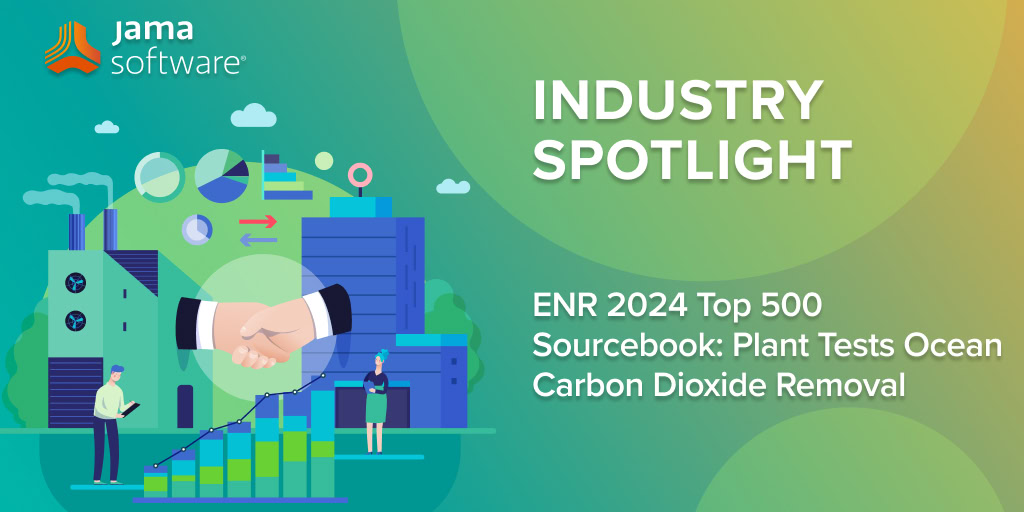
Jama Software is always looking for news that would benefit and inform our industry partners. As such, we’ve curated a series of customer and industry spotlight articles that we found insightful. In this blog post, we share an article, sourced from Engineering News-Record, titled “ENR 2024 Top 500 Sourcebook: Plant Tests Ocean Carbon Dioxide Removal” – originally published on July 16, 2024, and written by David Godkin.
ENR 2024 Top 500 Sourcebook: Plant Tests Ocean Carbon Dioxide Removal
Arup begins feasibility study of commercial-scale facility set for Canada site
Engineering has begun on a project its developers say could mark a new foray into ocean-based carbon dioxide removal.
The Quebec-based plant would be North America’s first commercial-scale, ocean-based carbon dioxide-removal facility, according to startup developers Equatic Inc., based in Los Angeles, and Deep Sky Inc., a Montreal firm. They say the facility would remove nearly 110,000 tonnes of carbon dioxide from the atmosphere annually—10% of which will be ocean-borne emissions. It also would produce 3,600 tonnes of hydrogen.
RELATED: Buyer’s Guide: Selecting a Requirements Management and Traceability Solution for Oil & Gas
The plant technology uses a seawater electrolysis process developed at the UCLA Samueli School of Engineering’s Institute for Carbon Management. The system draws ocean seawater into an electrolysis chamber where carbon dioxide molecules are separated from the water and its natural acidity is neutralized. “This in turn allows the ocean water to draw down more CO2,” says Phil De Luna, Deep Sky chief carbon scientist and head of engineering. “These carbon emissions are some of the hardest to abate and most difficult to electrify.”
Extracted carbon dioxide is stored in the form of solid calcium and magnesium-based substances that the firm says could be used to produce construction materials.
The technology is based on a $20-million demonstration plant, called Equatic-1, which is set to commission next year in Singapore in collaboration with its national water agency, the developers said.The commercial plant will have easy access to the ocean-connected St. Lawrence River, and could tap into Quebec’s massive hydroelectric grid.
RELATED: Traceable Agile™ – Speed AND Quality Are Possible for Software Factories in Safety-critical Industries
The facility would use less than 1.4 MW hours per ton of carbon dioxide, with removal cost estimated at less than $100 per ton by 2030, according to Equatic. Luna estimates the project’s cost at about $366 million. The plant may also be in line for carbon removal credits under a new U.S. Energy Dept. program, Equatic says, noting that such credits, as well as green hydrogen from this plant and future ones “have been pre-sold to companies such as Boeing, and further sales are ongoing.”
Engineering firm Arup has just begun a six-month plant feasibility study that is set to launch front-end engineering design work, environmental assessment and permitting, with a final investment decision estimated at the end of 2026.
If affirmed, construction on a 30-acre site would begin shortly after, with startup set for 2028. Deep Sky is currently exploring a plant location about 900 km northeast of Montreal, with a final site decision to be made by the end of 2024, the firm says.
- Navigating AI Safety with ISO 8800 in Road Vehicles - August 7, 2025
- Automotive Industry Signs Memorandum of Understanding - July 15, 2025
- Construction’s Next Leap: AI as a Strategic Partner - June 26, 2025